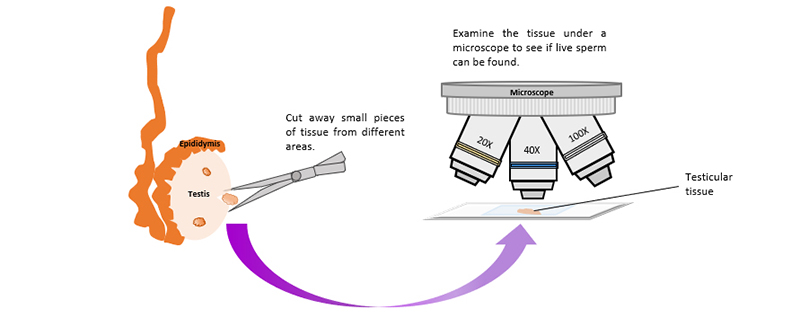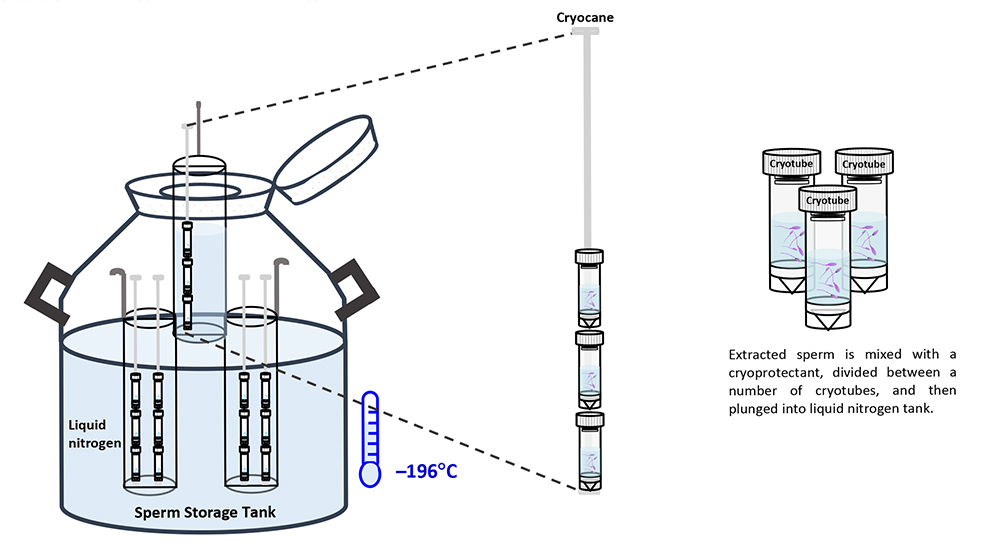Surgical Sperm Retrieval
What is surgical sperm retrieval?
Around 1/100 men have no sperm in their semen. This is known as azoospermia. Men who have azoospermia have to undergo surgical sperm retrieval in order to collect the sperm surgically for use in fertility treatments.
What are the causes of azoospermia?
Azoospermia can be classified into obstructive and non-obstructive types.
-
Obstructive azoospermia can be caused by:
-
Vasectomy (Male sterilization);
-
History of sexually transmitted disease such as Chlamydial infection;
-
Congenital bilateral absence of Vas Deferens (CBAVD), and in this condition, the man should be screened for Cystic Fibrosis (CF).
-
-
Non-obstructive azoospermia can be caused by:
-
History of chemotherapy or radiotherapy;
-
Genetic condition, and in this condition, the man should check his karyotype and Y chromosome for the presence of microdeletion;
-
Previous surgery to bring down undescended testes;
-
Mumps infection in teens;
-
No cause can be found.
-
What does the treatment involve?
Testicular sperm extraction (TESE) is usually performed under monitored anaesthetic care. It involves making an incision into the testicle to take a small sample (biopsy) away. The biopsy sample is passed to an embryologist immediately, who then examines the tissue under a microscope to see if live sperm can be found. In order to recover adequate sperm, a few samples are usually taken from different areas of the same testicle. Occasionally, it may be necessary to take biopsies from both testicles.

 scroll right to see more
scroll right to see more
When sperm are successfully collected, they are then mixed with a special fluid called a cryoprotectant, to protect the sperm from damage during the freezing process. The sperm is then divided between a number of containers called cryotubes, so that each cryotube can be thawed independently and the stored sperm can be used in multiple fertility treatments in the future. The cryotubes containing the sperm are then plunged into liquid nitrogen tanks for storage.

 scroll right to see more
scroll right to see more
How successful is surgical sperm extraction?
The chance of finding sperm during surgical sperm extraction depends on the cause of azoospermia. In general, there is a 50% chance of sperm being successfully retrieved for men with non-obstructive azoospermia. The chance is higher for those with obstructive azoospermia. However, successfully extracting sperm does not guarantee pregnancy. Whether the sperm can result in a pregnancy still depends on the quality of the sperm and the condition of the female partner.
What happens when a man wants to use his sperm?
When the man is ready to use his sperm, the sperm are thawed and used in fertility treatments. The sperm count from surgically retrieved sample is very low, and thus they can only be used for in-vitro fertilization (IVF) combined with intracytoplasmic sperm injection (ICSI), whereby a single sperm is injected into an egg directly to assist fertilization.
How long can the sperm be stored for?
The sperm collected from surgical sperm retrieval can be stored for 10 years or up to when the man is 55 years old, whichever is later.